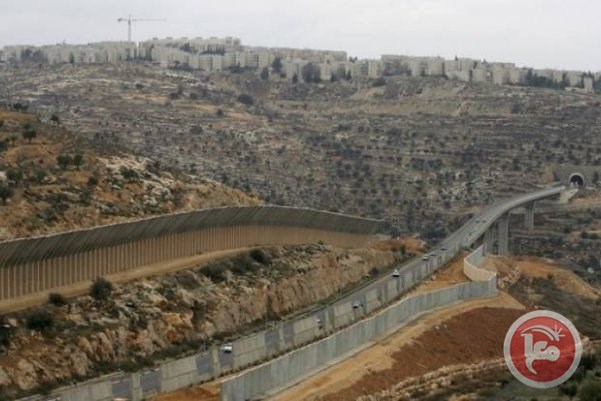Chile-based court files war crimes lawsuit against Israeli Supreme Court justices
November 29, 2016

BETHLEHEM (Ma’an) — A Santiago-based court in Chile on Monday filed a war crimes lawsuit against three Israeli Supreme Court justices for approving the construction of the Israeli separation wall, declared illegal by the International Court of Justice (ICJ) in 2004.
According to Israeli newspaper Haaretz, the lawsuit was filed by six Palestinian landowners in Beit Jala in the occupied West Bank district of Bethlehem and alleged war crimes, including crimes against humanity, against former Chief Justice Asher Grunis, and Justices Neal Hendel and Uzi Vogelman.
The claimants reportedly own the land that is expected to be cut off from their village by the separation wall, while five of the plaintiffs are Chilean nationals, Haaretz reported.
Hundreds of thousands of Palestinians migrated to Chile over the last century, resulting in a large Palestinian diaspora community in the South American country, while many Palestinians with Chilean nationality also reside in the West Bank, particularly in Beit Jala.
Haaretz added that as the lawsuit continues to unfold, more individuals could be charged with authorizing the wall’s construction in violation of international law.
Residents in Beit Jala have been engaged in a decade-long legal battle against a 2006 Israeli military order to build the separation wall around Beit Jala and the illegal Israeli settlement of Har Gilo.
In 2013, 58 local landowners, as well as nuns from the Silesian women’s monastery in Cremisan who joined their legal action, lost an appeal against the route of the separation wall.
Residents hoped that an Israeli Supreme Court decision in 2014 –which ordered the Israeli state to justify the route of the separation wall in Beit Jala’s Cremisan valley — was an indication that the proposed land seizure could be canceled.
However, in July last year the Israeli Supreme Court approved the construction of the wall using an alternative route, which would still separate the Silesian monastery and convent from the community it serves in Beit Jala, while swallowing the Cremisan Valley onto the Israeli side of the separation barrier.
The Cremisan Valley lies between the sprawling settlement of Gilo in annexed East Jerusalem, and the smaller West Bank settlement of Har Gilo, a few kilometers to the southwest.
Palestinians have long argued the the separation wall in Cremisan had no security benefit for Israel and was being constructed to annex land and connect the illegal settlements of Gilo and Har Gilo.
Israel’s High Court of Justice in January also denied a petition filed against the wall’s construction by the municipality of Beit Jala, Beit Jala’s landowners, and the Silesian monastery, according to Israeli rights group B’Tselem.
Israeli authorities renewed construction of the separation wall in Cremisan earlier this year, despite international condemnation, as the European Union warned that once finished, the wall would severely restrict nearly 60 Palestinian families’ access to their agricultural land, likely devastating their livelihoods.
Nearly 60 kilometers of the wall already cut through Bethlehem district and are built on Palestinian land, according to the UN.
The ICJ issued an advisory opinion in 2004 stating that the wall was illegal under international law and its construction must stop immediately, adding that reparations should be paid to Palestinians whose properties were damaged as a result of the construction.
Twelve years later, the construction of the wall has continued unabated as more than 62 percent of the construction has been completed, encroaching deep into the Palestinian territory, leaving Palestinian neighborhoods stranded on both sides of the barrier, and isolating communities from their agricultural lands.
In 2002, the Israeli government decided to build the wall in the Palestinian territory for purported security reasons, at the height of the Second Intifada.
When complete, the majority of the wall’s construction, 85 percent, will have been built inside the occupied Palestinian territory over the Green Line, consuming vast tracts of Palestinian land along its way and consuming land in Area C — the two-thirds of the the West Bank that are under full Israeli military and civil control — where illegal settlements have been built or are planned to be constructed in the future.
According to Israeli human rights group B’Tselem, eight Palestinian neighborhoods in occupied East Jerusalem, including Shufat refugee camp, were separated from the city by the barrier, leaving the communities in a no man’s land without access to municipal services, while their economies have severely suffered after the wall’s construction.
While Israel claims the wall must be built to ensure security of Israelis from potential Palestinian attacks by limiting Palestinian movement into Israel, rights groups have instead underscored the wall’s annexation of Palestinian territory as a main driver for its continued construction, while establishing permanence for illegal settlement construction by engulfing parts of Area C into the Israeli side of the wall.


